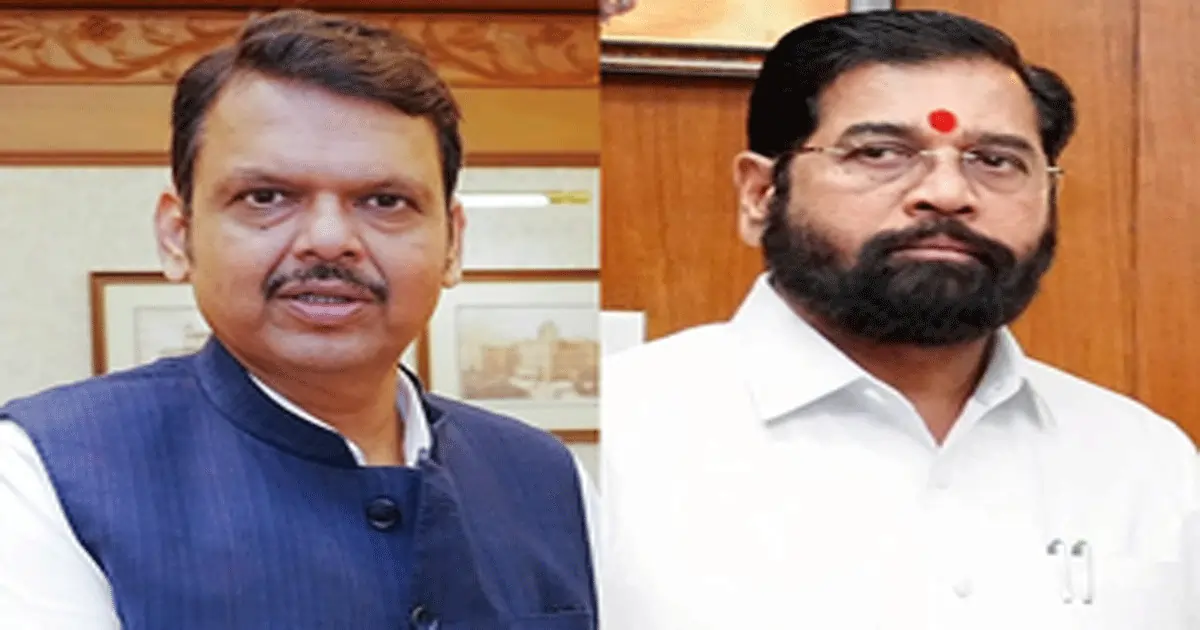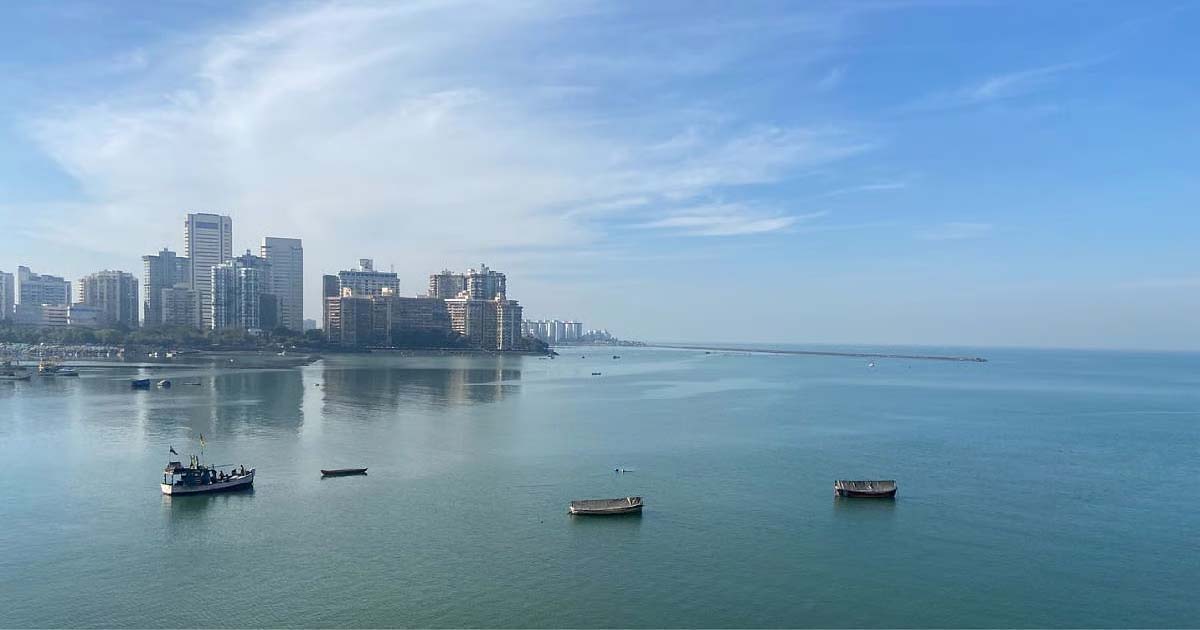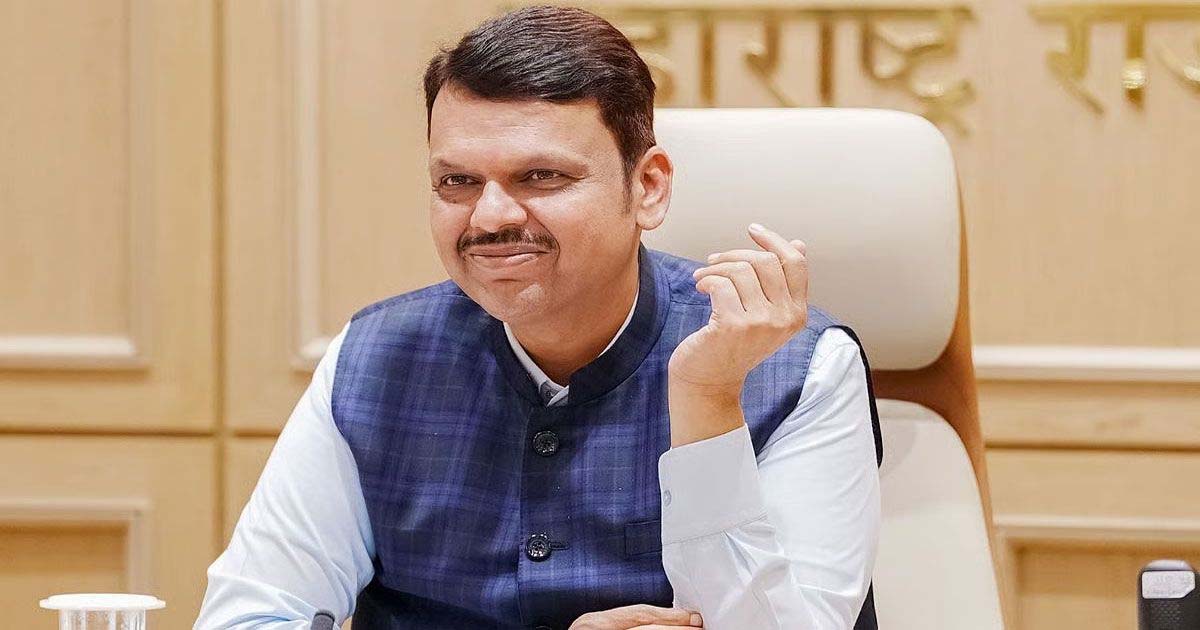Maharashtra
Shiv Sena(UBT) mouthpiece praises CM Fadnavis, targets Dy CM Shinde

Mumbai, Feb 26: Shiv Sena(UBT) on Wednesday showered praise on Chief Minister Devendra Fadnavis while congratulating him for his strong measures to bring discipline in the state administration, especially by taking stern action against fixers and brokers.
The Thackeray camp in the party mouthpiece Saamana’s editorial has thereby targeted former Chief Minister Eknath Shinde, saying that during his tenure the fixers and brokers had a free run.
“Due to rampant corruption, state politics has become rotten. Financial indiscipline has reached its peak. The money needed to buy and then feed MLAs, MPs, corporators and real Shiv Sena office-bearers was collected by looting roads, construction contractors, various state undertakings such as MMRDA, MSRDC, MHADA, SRA, and the Urban Development Department. Many switched parties to get the money from that loot,” the editorial read.
“Where did this flow of money come from? This money was accumulated through illegal tenders, fake works, commissions in fund allocation, plot scams and brokerage in housing construction. The latest news is that Shinde’s Chief Collector has fled to Dubai with ten thousand crore rupees,” claims the Saamana editorial.
“The Shinde faction has been nervous due to Fadnavis’ cleanliness movement. The tender of Rs 500 crore was increased to Rs 3,000 crore and in between Rs 1,000 crore was taken even before the commencement of the work. Out of which Rs 100 to 200 crore were to be distributed among the followers (Shinde) and all of the money is being used by taking them for a holy dip in Ganga at Prayagraj,” the edit piece says
“Fadnavis has started the sacred work of putting an end to all these manipulators. It would be surprising if Shinde and his people have not been angered by this! Fadnavis did another important work as Chief Minister. He took away the power to appoint the ‘PA’ and ‘OSD’ of the ministers. Out of the names sent by the ministers as ‘PA’ and ‘OSD’ to the Chief Minister for approval, 16 names were directly rejected by the Chief Minister. This was because these 16 people were engaged in fixing and brokerage by becoming OSD (officer on special duty) in the previous Shinde (Mindhe) led government. Chief Minister Fadnavis rejected all these ‘fixers’. The Chief Minister’s stance that he will not give the posts to ‘fixers’ is correct,” reads the editorial. It has further come to light that the 16 rejected, 12 were suggested by the Ministers from the Shinde camp to be their OSDs.
“During the Eknath Shinde era, the Ministry was a ‘fair’ for brokers and fixers. Anyone could come, deposit a percentage of the total contract and approve the funds and works. The works were given when the treasury was in a state of turmoil. Development works were approved in a hurry on the eve of the elections. The contractors did the work, but since the work was not properly approved, the contractors’ bills were delayed. Contractors’ associations have said that there is an arrear of about Rs 90,000 crore for various government works. Out of this, Rs 25,000 crore has already been taken as ‘brokerage’.”
“To keep the MLAs and MPs (Shinde-Ajit group) happy, they signed the papers. On the strength of those signed papers, these people took crores from the contractors. Now, with Devendra Fadnavis’ move to reconsider these works, the Shinde group’s calculations have gone haywire as they are reeling under the financial crisis…The people, who are going to the Shinde group, are either contractors or direct beneficiaries… if the Chief Minister has decided to destroy all these corrupt hoarders, then what will happen to all these fixers and hoarders?”, the editorial says.
“Many tricks of loot have come to light in three years. A French company accused MMRDA of ‘commission’ extortion. This company is involved in the construction of the Metro. The bills for regular work done by this company are being deliberately delayed. Foreign companies are told that the bills will not be cleared unless the ‘master’s’ commission is received. This is only defaming our country,” the edit piece reads.
“Deputy Chief Minister Shinde had recently met Union Minister Amit Shah and complained that CM Fadnavis is hitting them on the stomach … If the stomachs of MLAs and MPs remain empty, your party will not survive, Shinde told Shah. On the contrary, PM Modi’s role is to end corruption. Prime Minister Modi recently announced, ‘Just tell me the names of those who are taking money, and I will straighten them out one by one’. Then in such a situation, Fadnavis would not have any objection to telling Prime Minister Modi the names of Shinde and his fixers,” the Saamana editorial says.
Maharashtra
Mumbai Weather Update: City Wakes Up To Clear Skies, Mild Breeze; Overall AQI Stays In Moderate Range At 78

wether
Mumbai: After weeks of unsettled weather and intermittent showers, the city finally woke up to clear skies and crisp air on Thursday, marking what appears to be the end of the monsoon season. For the past two days, no rainfall was recorded across Mumbai, signalling that the retreating monsoon clouds have made way for the onset of post-monsoon conditions.
According to the India Meteorological Department (IMD), the city is expected to experience clear skies through the day, with only a minimal chance of isolated light showers or thunderstorms in select pockets. Daytime temperatures are likely to hover around 33°C, while the minimum will settle near 23°C, conditions described as pleasant and comfortable for early November.
The recent spell of short but intense showers had not only brought temporary relief from humidity but also helped wash out accumulated pollutants, leading to an overall improvement in air quality. Prior to this, the withdrawal of monsoon winds had caused a spike in pollution levels due to stagnant air and increased vehicular emissions, resulting in a hazy skyline and reduced visibility.
Fresh data released by AQI.in on Thursday morning reflected this improvement. Mumbai’s overall Air Quality Index (AQI) stood at 78, placing it in the moderate category. While the figure marks a slight dip from the good air quality recorded earlier in the week, it still represents a substantial improvement compared to the smog-filled conditions observed after monsoon withdrawal.
Residents across various parts of the city reported clearer skylines and visibly better air. Among the city’s monitoring stations, Wadala Truck Terminal recorded the highest AQI reading at 92, followed by Parel-Bhoiwada (90) and Mulund West (88). Santacruz East and Bhandup West both registered an AQI of 87, keeping them within the moderate range.
Cleaner air was observed in several western suburbs, where Kandivali East recorded an AQI of 45, falling in the good category. Malad West (59), Powai (62), Jogeshwari (65), and Borivali East (67) were all categorised as moderate, suggesting a consistent improvement across the city’s landscape.
As per AQI.in’s classification, an index between 0–50 is considered “Good,” 51–100 “Moderate,” 101–150 “Poor,” 151–200 “Unhealthy,” and anything above 200 is deemed “Severe” or “Hazardous.”
Maharashtra
Anti-Narcotics Cell ANC arrests drug dealer Akbar Khao in major operation

Mumbai: Anti-Narcotics Cell ANC Ghatkopar has claimed to have arrested drug dealer Mohammad Shafi Sheikh alias Akbar Khao on charges of drug trafficking. MCOCA was applied to him in the police station for drug trafficking and he was released on bail. Despite this, he used to supply drugs. ANC had arrested an accused in a drug case. During his investigation, it was revealed that Akbar Khao was a fugitive in this case. His details were known and clues were found. He is hiding in Odisha, after which the police arrested him from Raj Gangapur Sundergarh. A total of 15 cases have been registered against Akbar Khao, including NDPS Act and various crimes. Two NDPS Act cases are registered in VB Nagar. ANC has 2 NDPS drug trafficking cases, a total of 18 cases have been registered. The ANC has arrested two accused in this case and also seized drugs worth Rs 12 crore. This operation was carried out by ANC DCP Nunath Dhole on the instructions of Mumbai Police Commissioner Deven Bharti.
Maharashtra
State ready for Zilla Parishad and Gram Panchayat Mahayuti elections: Chief Minister Fadnavis

In the Zilla Parishad and Gram Panchayat elections in Mumbai state, Mahayuti will contest the election as a united front and even where there is no electoral consensus in Mahayuti, there will be a friendly contest and it is hoped that the people of the state will trust Mahayuti in these elections. This claim has been made by Maharashtra Chief Minister Devendra Fadnavis. No formula for the distribution of seats in Mahayuti has been decided so far for the local body elections. However, where the alliance party and the BJP are strong, a formula for a solo contest has been decided, just like the talk of Eknath Shinde in Thana and BJP’s solo contest in Pune is common.
Fadnavis criticized Uddhav Thackeray and said that it is his job to insult him. If he is visiting the state, it is a good thing, but the people know everything and they will restore faith in Mahayuti in the elections. He said that the Election Commission has announced the elections. Uddhav Thackeray and the opposition want to postpone the elections, so they are alleging irregularities and rigging in the voting list. However, the Supreme Court has issued instructions to hold the elections soon, so it is not possible to postpone or delay the elections. Fadnavis expressed confidence that he has faith in the people. This time too, the people will agree with Mahayuti. Therefore, the opposition wants to postpone and postpone the elections, while Mahayuti is ready for the elections.
-

 Crime3 years ago
Crime3 years agoClass 10 student jumps to death in Jaipur
-

 Maharashtra1 year ago
Maharashtra1 year agoMumbai Local Train Update: Central Railway’s New Timetable Comes Into Effect; Check Full List Of Revised Timings & Stations
-

 Maharashtra1 year ago
Maharashtra1 year agoMumbai To Go Toll-Free Tonight! Maharashtra Govt Announces Complete Toll Waiver For Light Motor Vehicles At All 5 Entry Points Of City
-

 Maharashtra1 year ago
Maharashtra1 year agoFalse photo of Imtiaz Jaleel’s rally, exposing the fooling conspiracy
-

 National News1 year ago
National News1 year agoMinistry of Railways rolls out Special Drive 4.0 with focus on digitisation, cleanliness, inclusiveness and grievance redressal
-

 Maharashtra12 months ago
Maharashtra12 months agoMaharashtra Elections 2024: Mumbai Metro & BEST Services Extended Till Midnight On Voting Day
-

 National News1 year ago
National News1 year agoJ&K: 4 Jawans Killed, 28 Injured After Bus Carrying BSF Personnel For Poll Duty Falls Into Gorge In Budgam; Terrifying Visuals Surface
-

 Crime1 year ago
Crime1 year agoBaba Siddique Murder: Mumbai Police Unable To Get Lawrence Bishnoi Custody Due To Home Ministry Order, Says Report












